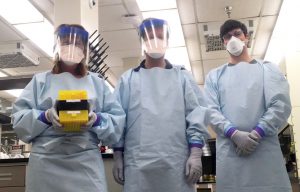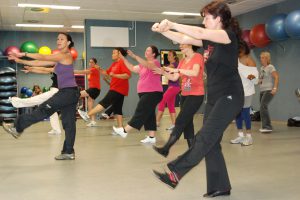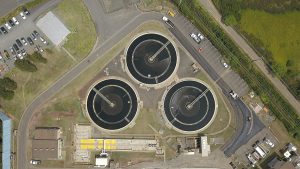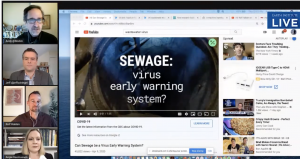We are pleased to announce the publication of our manuscript titled “Modeling microbial growth in carpet dust exposed to diurnal variations in relative humidity using the “Time-of-Wetness” framework” in the journal Indoor Air. This work is a culmination of research investigating how changes in relative humidity impact microbial growth in carpet dust. Our related study …
Authored by Kevin Van Den Wymelenberg, University of Oregon, Professor of Architecture and Director for the Institute of Health in the Built Environment and Mark Fretz, Research Assistant Professor and Director of Knowledge ExchangeLives & Livelihoods, the UnSeen Hope to Reopen How are we going to balance decisions about increasing acute risks to human life …
Only somewhat related to the Built Environment, but still some mention of occupant density and airflows within a confined space. This short article is a description of an outbreak of COVID-19 in South Korea that took place in several fitness dance classes there. Key point; “Vigorous exercise in confined spaces should be minimized during outbreaks”. …
In this post I’m going to share the published (relatively minor) corrections to our review on COVID19 and the Built Environment and use that as a hook to argue for the value of peer review. I’ve posted previously on our rush effort to get this paper out as quickly as possible, it was only about …
So our collaborators from the Biology of the Built Environment (BioBE) Center at the University of Oregon have been working hard to get their environmental sampling qRT-PCR assays for SARS-CoV-2 up and running. I’m sure we’ll be posting more about their results as they develop. But they are now offering their testing as a service …
We’ve posted recently a few times (here, here, and here) about the idea of doing wastewater surveillance for SARS-CoV-2 (and we’ve just submitted a grant on this as well). In those cases the focus is on detecting RNA from the virus and using that to guide community health decisions such as when to end (or …
(h/t to Mark Martin for posting about this on Twitter) A break from COVID-19… Microbes in Spaaaaaaaaaace. (it never gets old). This article entitled “Crewmember microbiome may influence microbial composition of ISS habitable surfaces” is a much needed addition to the literature on the ISS microbiome. Work from our lab an others has examined the …
Interesting discussion of sewage and COVID19. Interview / discussion led by Andrew Revkin (Columbia University’s Earth Institute) and includes Rolf Halden (Arizona State University), Jeff Schlegelmilch (Columbia’s National Center for Disaster Preparedness) and Angela Rasmussen (Columbia’s Mailman School of Public Health).
Wastewater detection for SARS-CoV-2 seems to be a hot topic these days (full disclosure, we recently submitted a grant recently to jump on this same bandwagon). This study “Temporal detection and phylogenetic assessment of SARS-CoV-2 in municipal wastewater” took place in Montana (USA). This study goes a bit further than the previous one by genome …
This paper in Nature is the first study to report size distributions of SARS-CoV-2 in air. Although the virus itself is 0.1 microns in diameter, we expect it to be released into air in droplets that span a wide range of sizes. The droplets will shrink to less than half their original diameter as some …




